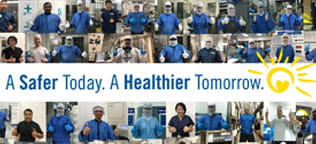Needlestick Prevention
The World Health Organization (WHO) estimates that of the 35 million healthcare workers worldwide, at least 2 million people, suffer accidental needlestick injuries each year. More than 20 pathogens have been reportedly transmitted from needlesticks. The most serious transmissions include: Hepatitis B, Hepatitis C and HIV. Two of the most common causes of needlestick injuries are two-handed recapping and the unsafe collection and disposal of sharps. According to Occupational Safety and Health Administration (OSHA), nurses have the most frequent exposure, registering almost 50 percent of needlestick injuries. Hollow-bore needles are the main cause of injury in 68.5 percent of all cases. 1
![]()
The Needlestick Safety and Prevention Act was signed into U.S. law in 2000. , and more recently (2013), the European Union implemented similar legislation, however many countries still operate without any legislative guidance. Due to increased scrutiny and influence from the U.S. Food and Drug Administration, OSHA, healthcare providers and industry, many pharmaceutical companies are actively pursuing the use of safety engineered systems. The preference for single-handed activation of a safety system is overwhelming and the reasons are quite simple: ease of use, no need for needle recapping and elimination of unprotected needle disposal.
There is an economic burden that should be addressed. The higher purchase cost of safety engineering systems and lack of awareness of the OSHA regulation may tempt the healthcare industry to use conventional devices. It is imperative that purchasers review the legal status, familiarize themselves with all regulations and be engaged fully to ensure compliance. Does the price outweigh the fines or the cost to treat these injuries? Treating these accidental needlestick injuries exceeds $3 billion per year in the United States alone.2
West has manufactured over 1.4 billion systems in Europe for low molecular weight heparin, and West product offerings continue to grow. We all play a role to ensure the safety of some of our healthcare workers, including nurses, doctors, friends and family members.
References:
1 https://www.osha.gov/Publications/OSHA3161/osha3161.html
2 Ibid.









